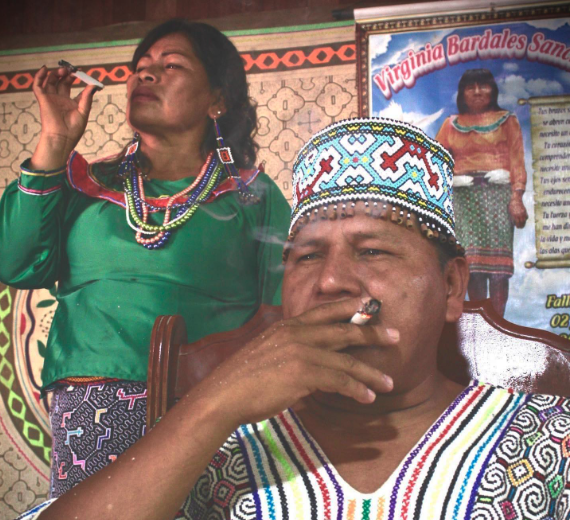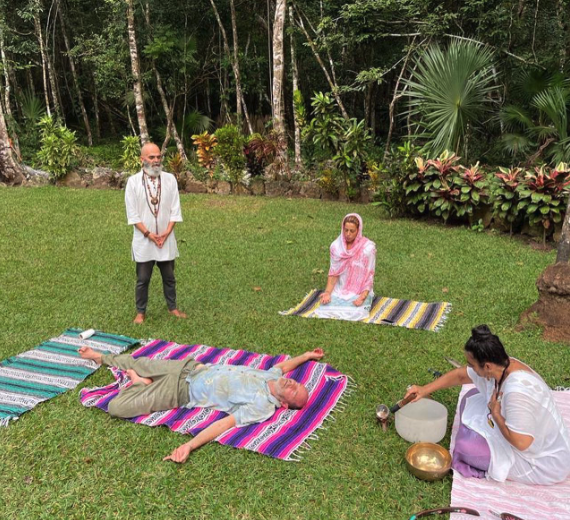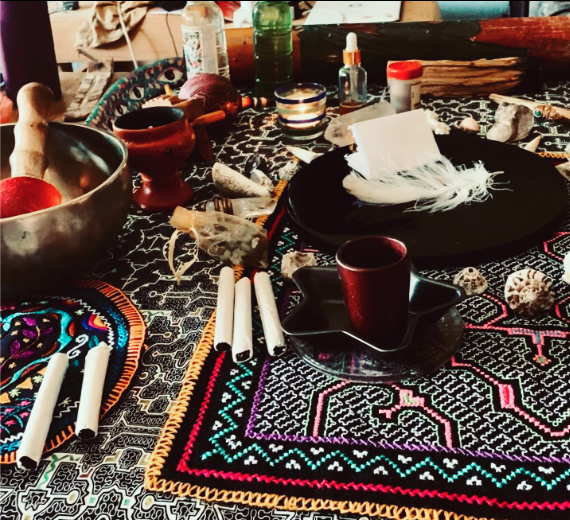Shakti Healing






Atmosphere
Features
Shakti Healing Ayahuasca Retreats: An In-Depth Review for Sessions in Costa Rica
If you are considering ayahuasca in Costa Rica, Shakti Healing has operated since its founding, facilitating plant medicine sessions in Matapalo, Guanacaste Province. The center supports participants with a heart-centered approach, emphasizing sacred ceremonies for emotional, physical, and spiritual purification. Offerings include ayahuasca, Bufo Alvarius, Kambo, and Changa, with programs tailored for personal healing and rebirth. It is worth noting the focus on one-on-one and group sessions, though no major operational changes or incidents have been reported as of July 2025.
🎯 At a Glance
- Locations: A serene property in Matapalo, Guanacaste Province, Costa Rica, immersed in natural surroundings for transformative experiences.
- Approach: Heart-centered and sacred, using plant medicines like ayahuasca, Bufo Alvarius, Kambo, and Changa, with varying group sizes and personalized therapies.
- Suitable For: Those seeking profound emotional healing or preferring supportive, loving environments in Costa Rica, though feedback varies on intensity.
- Costs: Specific pricing not detailed in available sources, but retreats include ceremonies, meals, lodging, integration; contact for current rates.
- Overall Assessment: Reliable on sacred practices, with potential for broader medical ties. Directory evaluation: B+ (notable for emotional support, opportunities in accessibility).
💬 What Guests Are Saying
Participants in Shakti Healing ayahuasca sessions in Costa Rica frequently highlight the sacred ceremonies, as in site descriptions noting profound emotional healing through medicines. The loving environment draws praise, with accounts on Facebook emphasizing a heart-centered atmosphere and feeling embraced during retreats. Experiences include powerful rebirth, with some noting Bufo Alvarius helped reset traumas, though a few mention intensity requiring preparation. Aggregated from 2021-2024 entries: Strong on healing, positive on overall resonance.
We encourage sharing your perspective through our submission form to maintain current insights.
🚩 Incident Report
Following a thorough review of online sources including Reddit subreddits like r/Ayahuasca and r/Psychonaut, Quora threads, Facebook groups such as Psychedelic Healing and Ayahuasca Experiences, news outlets, retreat discussion boards, ICEERS safety reports, and public records, no confirmed cases of theft, sexual misconduct, or criminal activity directly connected to Shakti Healing ayahuasca retreats in Costa Rica have emerged.
- Theft: Public forums, ICEERS data, and news searches reveal no accounts of stolen belongings or valuables at Shakti Healing plant medicine ceremonies.
- Sexual Misconduct: Searches across Reddit, Facebook, news databases, and ICEERS show no complaints, allegations, or legal issues involving Shakti Healing staff or guides in ayahuasca sessions. While broader ayahuasca retreat risks exist, no Shakti Healing-specific cases were documented.
- Crime: No arrests, police involvement, or violence linked to Shakti Healing appears in Google News, Costa Rican media, retreat forums, or ICEERS documentation.
That said, some Reddit users from 2023 note concerns about emotional overwhelm due to intense Bufo Alvarius sessions, though no formal incident was confirmed. Shakti Healing’s online reputation remains free of such incidents, alongside general ayahuasca hazards like psychological strain in unregulated environments noted in ICEERS studies. No publicly available reports of additional incidents exist.
New update as of August 2025: No new concerns or incidents have surfaced in recent searches; the center continues to emphasize loving, safe spaces without reported issues.
🔍 Critical Notes
Shakti Healing’s ayahuasca programs in Costa Rica seek to provide meaningful transformation through a therapeutic framework and sacred support. Positive aspects include integration practices that assist in applying learnings to daily routines and a focus on emotional release. However, considerations include the lack of on-site medical staff potentially amplifying intensity, and varying group sizes possibly limiting attention during heightened periods. Regulatory contexts: Costa Rica permits plant medicine in wellness settings with variable oversight. Direct confirmation of screening protocols is advisable, given occasional community reports of overwhelm in similar retreats.
🆘 Screening & Mental Health Risks
For Shakti Healing ayahuasca retreats in Costa Rica, screening involves participant-provided medical disclosures regarding cardiovascular, hepatic, and psychological conditions. Preparation encompasses dietary and mental readiness, complemented by post-session discussions and personalized follow-up for integration. Reports indicate supportive vetting, but general ayahuasca research suggests approximately 55 percent of participants encounter transient challenges like heightened anxiety, particularly without sufficient groundwork. For individuals addressing trauma, benefits may include emotional reconnection, yet avoidance is recommended for those on certain medications due to interaction risks. Consultation with a healthcare provider is essential prior to engaging in ayahuasca sessions in Costa Rica.
🧪 Brew Substance
Shakti Healing employs traditional ayahuasca from Banisteriopsis caapi vine and Psychotria viridis leaves, forming a preparation rooted in Shipibo wisdom with DMT and MAO inhibitors for profound effects. Participants report it facilitates deep healing with visual and emotional alterations, while Bufo Alvarius and Kambo aid purification. Supplementary elements like Changa enhance experiences. Those expecting conventional potency should align with preferences for plant medicine engagements in Costa Rica.
📍 Location, Setting & Style
- Costa Rica: Situated in Matapalo, Guanacaste Province, the venue provides a natural environment conducive to quiet ceremonies.
- Setting: Immersed in jungle vibes for connection to nature and healing.
- Style: Emphasizes sacred elements with inclusions like ikaros chants, shared meals, and personalized therapies. Group interactions promote love, incorporating ancestral practices.
Practical guidance: Arrive via Liberia International Airport (nearby); local transport options are straightforward, and advance reservations are suggested for 2025 availability.
Should You Book?
Shakti Healing presents a viable option for ayahuasca retreats in Costa Rica, particularly for those valuing sacred, loving spaces over clinical settings. With high satisfaction from attendees rating it for emotional breakthroughs, it suits exploration of healing or purpose. Nevertheless, if medical oversight or milder intensity are priorities, variable assessments on overwhelm warrant review. Should preparation and follow-through align with your needs, it may prove beneficial; thorough evaluation is recommended.
The Team & Story
Initiated by Soledad Guerra (Inirama), Shakti Healing originated from her 15+ years in physical health, yoga, and ancestral medicines, trained with Shipibo and Matses tribes in Peru and Mexico. The narrative centers on fostering wholeness through plant diets and ikaros, influencing loving facilitation. The approach prioritizes guidance, with Inirama’s name meaning ‘good-smelling medicine’ reflecting her devotion.
Prep & Integration Tips
Prior to participation: Adhere to an MAOI-compatible diet for two weeks, excluding items like aged cheeses, alcohol, and caffeine; fully disclose health details. Bring comfortable attire, a notebook, and an eye covering. Following: Document reflections, engage in provided forums, or arrange professional support. Effective integration sustains benefits; avoid abrupt returns to routine activities.
Pros & Cons
| Pros | Cons |
|---|---|
| Profound sacred ceremonies | Lack of on-site medical staff |
| Loving integration resources | Potential emotional intensity |
| Established safety history | Variability in group dynamics |
| Heart-centered settings in Costa Rica | Evolving focus on personalization |
Book Your Ceremony
Bookings are managed through Shakti Healing’s platform; consult their schedule for details. Programs include multi-day immersions with ceremonies, nutrition, lodging, and supportive activities.


